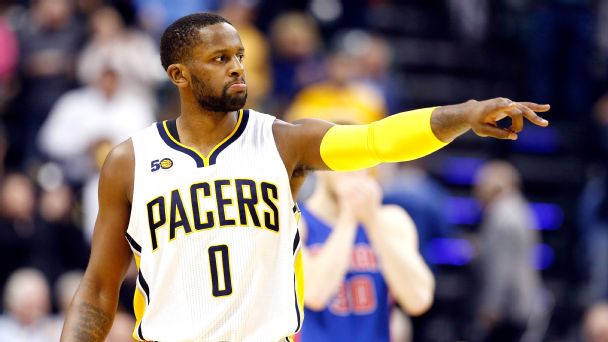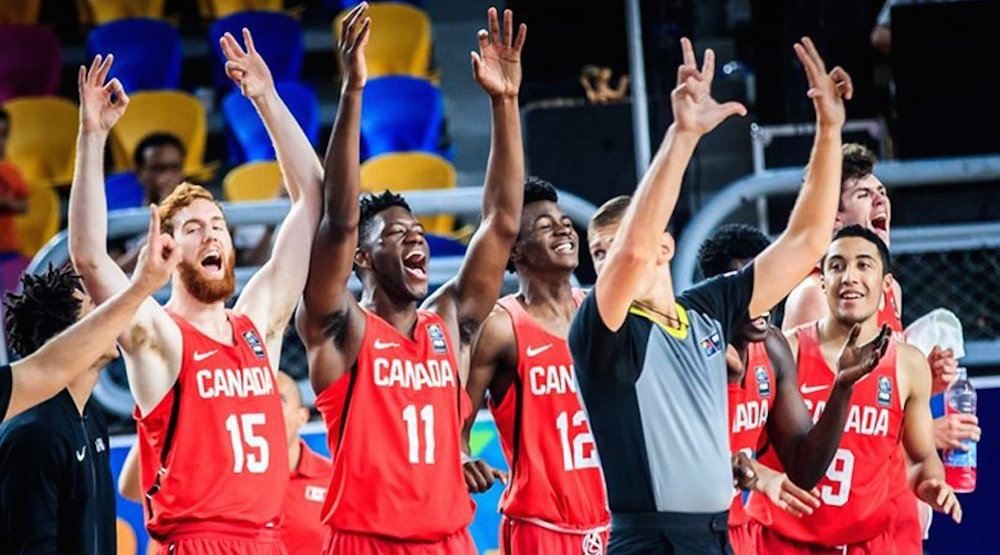The Toronto Raptors are finalizing a sign-and-trade with the Indiana Pacers that would see C.J. Miles land in Toronto in exchange for Cory Joseph, according to a report from Adrian Wojnarowski of ESPN. Miles’ contract will be for three years and $25 million with a player option on the third year, a really nice value.
The details are still being worked out, but Wojnarowski reports that there is momentum and it should be completed soon.
Miles has long made sense as a Raptors target as the sort of versatile defender and shooter that the current depth chart is sorely lacking. With P.J. Tucker, Patrick Patterson, and DeMarre Carroll all outbound, the Raptors had lost three of their five best long-range shooters and a large volume of their threes from a year ago, right as the team talks up the need to introduce more threes to the offense. In Miles, they land an effective long-range shooter at high volume, someone who has shot 36.1 percent from long-range for his career and 37.8 percent on 5.5 attempts per-game over the last five years.
There’s more to Miles’ game than just the outside stroke, though he’s never shot particularly well inside the line. He flashed encouraging skill as a passer early on in his career when he was mostly a guard, and while his assist rate has dropped off precipitously over time, he generally makes the right decisions, and he rarely turns the ball over, always a Raptors staple. His usage shrunk a year ago in Indiana, which came with a spike in true-shooting percentage, although historically he’s hovered around league average in terms of usage and overall offensive efficiency. The fit in Toronto should help him maintain his strong 2016-17 production, and he’ll be able to feast on open corner threes, which the Raptors’ offense does a decent job creating for role players already.
At the defensive end, Miles is a piece the Raptors can slot in at small forward and use in switchy multi-wing lineups. He’s 6-foot-6 and 220 pounds with a decent wingspan and nice lateral quickness, and he and Norman Powell should be able to cross-match seamlessly when they share the floor. Miles has even played some power forward in recent years, and the Raptors figure to play a lot of three-wing or two-guard, two-wing lineups around a single big this coming year.
Overall, Miles is a really nice piece. Multi-year real plus-minus shows him as about a net neutral player, while he was a modest positive a year ago. The Pacers have been better with him on the floor than without in four of the last five seasons. He’s also generally regarded as a quality person and locker room presence, something the Raptors value highly. He’s a useful two-way piece and about as round-peg-in-round-hole a fit as you can get this time of year. It’s unclear whether he’ll start or come off the bench, but the guess here is Powell gets the first crack at starting and Miles adds some much-needed shooting to the second unit.
Getting him for a hair over $8 million annually is a serious bargain, one the Raptors really needed to find to fill out the roster. A bit of patience seems to have paid off here, and the Raptors now have another core piece on the same timeline (or close to it, given the option year) as their three stars.
Losing Joseph hurts, of course, and he’s a really nice addition for Indiana. A beloved hometown player, Joseph’s emerged as one of the best backup point guards in basketball. He’s been a great part of the team’s improving culture the last few years (and a hilarious stalwart in every commerical in rotation in Canada). He’ll fit in well in Indiana, sharing duties at the point with Darren Collison and playing alongside Victor Oladipo in a new-look backcourt, and the opportunity for an even bigger role is well-timed for him, given his (potential) impending free agency in 2018. Joseph has two years remaining on his deal but can opt out after this coming season, and flipping him before that point for a useful piece on a similar salary with longer term is a nice piece of business.
Joseph is also a bit superfluous with the emergence of Delon Wright, who has shown himself to be ready for NBA backup duties for some time now. Slowed by a shoulder injury to start last year, Wright eventually found a groove, providing savvy and annoying defense with his length and using his bouncy, amoebic drives to draw attention and create for teammates the other way. A maestro in transition, Wright will need to continue getting stronger to improve his finishing, and even just his confidence shooting at the rim. He’ll also need to continue to stretch his range out to the 3-point line, something that’s come along fairly well but isn’t an established weapon just yet. He’s ready for a bigger role and the Raptors remain incredibly high on him, with DeMar DeRozan in particular taking an interest in his development this summer.
Behind Wright, Fred VanVleet is a steady hand manning the third-string duties. Considering he may be the second-best shooter on the team behind Kyle Lowry, VanVleet could figure into smaller lineups at times, and there’s always a chance he pushes Wright for the backup spot at times, as he did during Lowry’s injury last year. Having two young guards the team trusts push each other behind Lowry is hardly the worst thing for the Raptors, and if either or both struggle, the team has two-guards capable of running the offense for brief stretches, too.
The Raptors’ depth at the point allowed them to deal from a position of strength here. Given their proclivity for two-guard lineups, they weren’t exactly having their hand forced here, but unloading a guard or center always seemed the likely path to landing a forward and balancing the roster a bit. As things stand, their lineup card looks a little closer to an opening-day setup.
PGs: Lowry, Wright, VanVleet
Wings: DeRozan, Powell, Miles, Caboclo, Anunoby, McKinnie
Bigs: Ibaka, Valanciunas, Poeltl, Siakam, Nogueira, Hamilton
Sadly, this ends the 12 hours or so where it looked like Bruno Caboclo might get rotation minutes. The team remains encouraged by his defensive progress and physical growth, and they’re extremely high on OG Anunoby when he gets healthy, too. They needed help at the forward position, though, as a competitive team can’t really have those kind of question marks out of the gate.
There’s still plenty of time and potentially more moves to come. Quick math shows the Raptors a hair over the luxury tax right now, and being so close to it, they may look to shed a salary to avoid paying altogether. Using the stretch provision on Justin Hamilton might do it, or they may be able to dangle Lucas Nogueira in an attempt to recoup some of their current draft-pick deficit. At present, Toronto has access to the taxpayer mid-level exception, too, and shaving some salary could open up the full mid-level exception. Because they acquired a player via sign-and-trade, they’re now hard-capped at $125.3 million for the season, though. (We’ll do a full cap update when we know the exact numbers on deals for Lowry and Miles.)
Today, the Raptors make a lot more sense than 24 hours ago. It’s tough to see players like Tucker, Patterson, Joseph, and Carroll go, and the team might take some time to gel as they work in new pieces and turn more responsibility over to some young players.
Out: Tucker, Patterson, Joseph, Carroll, 2018 1st, 2018 2nd
In: Miles, Anunoby
Some overhauling was always going to be the cost of retaining three stars at market rate, and the Raptors’ trust in their player development and their ability to find smart deals like this one gave them the confidence to go ahead with what looked like an ill-fitting group on July 1. It’s tough, and the Raptors are a little thinner now if no internal development is priced in. But it’s necessary, and Miles – a player I’d been barking about trying to land on Twitter for over a week – is about as good a fill-in as the Raptors could hope for on this market. They’re now a little more balanced, a little less burdened by the specter of a big tax bill or the tax apron, and they’ve left themselves plenty of time to continue to tweak.



